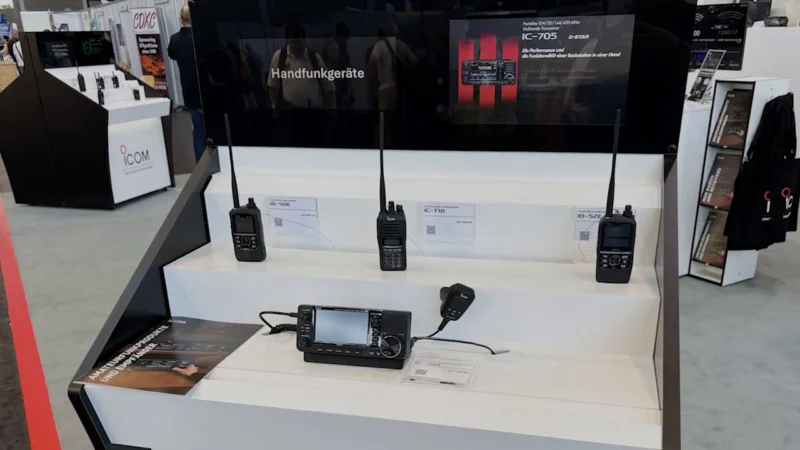Safety Through Technology: The Future of Emergency Pro AV
The need for emergency management mass notification systems is not new. For centuries, humans have worked to alert one another of impending dangers. From bonfires to church bells to sirens the instinct to protect human life and property is strong. In 1963, the Kennedy Administration introduced the Emergency Broadcast System to the U.S. infrastructure to provide nationwide notifications of emergencies.
However, the unfortunate reality is that many systems are not designed to handle crisis situations in contained spaces such as buildings, schools, airports, and malls.
“An emerging trend we see in emergency response and in emergency management is the uptick, or the increase, in viable threats of violence or violence towards an establishment whether it be a mall, an airport, a school, a business,” said Adam Coughran, President at Safe Kids Inc.
In addition to the type of emergencies most people understand such as massive weather events, bomb threats, and terrorist activities, Americans have to deal with the added stress of knowing that mass shootings are on the rise. According to the Gun Violence Archive, there were 692 mass shootings in 2021, up from 611 in 2020, and 417 in 2019 – that’s nearly two mass shooting events a day throughout the U.S.
Digital Signage Helps Create Effective Emergency Communication Systems
“We as humans are visual people and having visual display technology in places of mass population, I think is highly beneficial to an organization’s overall safety plan,” noted Michael Wilson, Director of National Accounts and Special Projects at CTSI (Corbett Technology Solutions).
Wilson goes on to note that “visual displays such as large format LED, videowalls, kiosks, or traditional LCD flat panels can be used during normal standard operations as dynamic digital signage devices.” And they can be repurposed to provide visual notifications in a crisis. This is great news for business owners and institutions. The world is going increasingly digital with people expecting more and more experiences when they are engaging with the world.
Sean Matthews, President and CEO at Visix stated that “digital signage is one layer of a multi-layered approach to alerting the public or employees to a potential threat that might be on a campus, in a mall, in a building.” Developing systems that employ digital signage that is used daily to advertise products or services, deliver news to employees, or provide fans with interactive experiences in a sports venue is the future of AV in creating effective emergency management systems.
Additional “integrations include IP speakers, digital signage, desktop computers and mobile devices for delivering messages; as well as incorporating panic buttons, IoT devices, wearable devices, and mobile apps for triggering a message” (Security Infowatch). The more ways emergency responders and onsite leadership can communicate in real-time to people who are in danger increases the likelihood of people receiving the information they need to stay safe.
Matthews also noted the importance of creating an action plan to effectively transition digital media from everyday use to emergency response as well as creating alerting protocols to avoid scaring people. The best systems will provide relevant, timely information that will guide individuals in a crisis – whether that is staying in place or moving to an entrance or exit.
Understanding the Challenges of Navigating Buildings in A Crisis
“A lot of places forget if you’re a place of public accommodation – that could be a hotel, could be a mall, a shopping center, a grocery store. For a lot of these places, the majority of people don’t really know the layout… and especially in a large organization like a shopping center or large mall, the people there might only know the two or three stores that they frequent, not actually know the rest of the mall or the layout,” explained Coughran.
This is critical for business owners, managers, and employees to understand so that they can best assist people in a crisis. And, it’s where digital signage can make a massive difference in outcomes. According to William Seifert, CTS-I, CTS-D, President of Critical Workspace Solutions at CTSI, “AV technology should be used to enhance your safety plan to ensure clear instructions are given to the right people within the right locations. Visual indications from LED signs can accompany audio alerts to make sure people understand what to do and when to do it within their specific location within a facility.”
Additional benefits of signage are that information can be location specific and may or may not be accompanied by audio notifications. In an active shooter situation, this allows emergency responders to communicate information without the shooter being aware protecting students and staff alike.
Understanding Crowd Behavior in an Emergency
Anyone who has ever been in an emergency situation knows that human behavior changes. And for those that haven’t, it’s not hard to imagine the stress of trying to navigate through a crisis in a known or unknown environment. In a crisis, crowd mentality takes over – people will follow what the majority are doing, go in the direction of the majority. The inability for many to think logically in a crisis is normal. Mass notification systems that are scalable while integrating multiple technologies to capture the attention of individuals and guide them to safety may just be the solution a business is looking for.
Charles Kowalczyk, Sales Operation Manager at AtlasIED believes audio notifications are a vital component of a successful emergency management system and that they need to be accompanied “by visual cues on content screens or smartphones” when possible. Additionally, “intelligible audio is critical, especially during an emergency. Furthermore, taking the human interaction out of the message delivery is important. A pre-recorded human voice denotes a sense of calm and familiarity guiding occupants to safe harbor,” he said.
The more information that can be dispersed will allow companies to reach people in multiple ways which may just influence the way the crowd goes while helping people stay as calm as possible. In fact, lack of information during a crisis greatly influences a person’s actions.
Crowd Safety gives the example of a person looking for a building exit during a fire. The longer a person is unsuccessful in finding that exit, the more stressful the situation becomes. This can lead to what may seem like irrational and desperate actions such as jumping out a window to find safety without thinking about the potential consequences of doing so.
Experts in Emergency Management Systems Help Maximize Investments
Whether a company is looking to update an existing system or install one for the very first time, consulting with experts in the AV industry who have experience creating and deploying effective emergency notification systems will allow business leaders to maximize their investments. Experts know how to identify potential threats to an establishment and have the ability to provide insight into the most effective solutions to guide people throughout a crisis.
Digital signage maximizes existing hardware and allows businesses and institutions to utilize them during normal business operations. They also provide the opportunity to identify potential threats through video recognition, supplement audio alerts when relevant, and can deliver real-time instructions on the path to safety.
In assessing an existing system, understanding how AV technology can potentially improve outcomes in a life or death situation is the first step to enhancing emergency management protocols. When every second counts, digital signage has the potential to inform and direct people to safety in buildings, institutions, and venues of any size.







